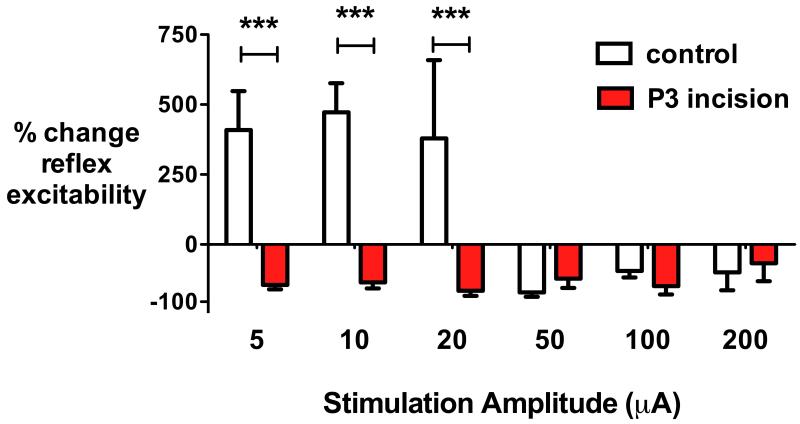Fig. 2.
Neonatal injury alters the spinal reflex response to rostroventral medulla (RVM) stimulation. Electrical stimulation of the RVM in naive adult rats (control, n=5) produces a biphasic pattern of change in reflex excitability. Spinal reflex excitability (quantified as the percentage change from baseline in the area under the mechanical stimulus vs electromyography response relationship) is facilitated by low intensity stimulation (5, 10 and 20 μA), and inhibited at high intensities (50, 100 and 200 μA). In age-matched adults with prior plantar hindpaw incision on postnatal day 3 (P3 incision, n=9), all intensities of RVM stimulation inhibit reflex responses at P40. Bars = mean±SEM, ***P<0.001 two-way repeated measures ANOVA with treatment as between-group variable and stimulus intensity as within-group repeated measures followed by Bonferrroni post-hoc comparisons.

